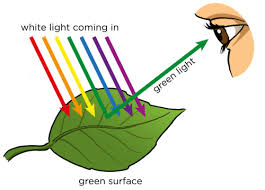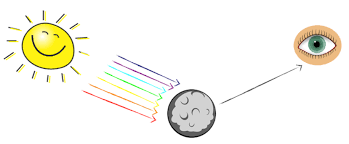The official discord link if you wish to join the discord: https://discord.gg/j5RKwCvAFu
Support the wiki on our official Ko-Fi page or Patreon page!
Light Dodging Feats

"Light" or "Laser" dodging is a feat commonly done in fiction. However, not every case of this is automatically light, there are generally numerous contradictions to the feats that prove either the author does not understand what light is, thus applying Death of the Author. There are also many cases, however, of the opposite where something clearly meets light’s requirements but isn’t explicitly called light. We will give the following requirements we view as best for lasers or light.
Requirements
We assume light feats are lightspeed until proven otherwise, and the inverse for lasers. Lasers vary in fiction on how they work and their properties. We accept lasers or light in fiction if:
Refraction

Refraction is the bending of light (it also happens with sound, water, and other waves) as it passes from one transparent substance into another. This bending by refraction makes it possible for us to have lenses, magnifying glasses, prisms, and rainbows. Even our eyes depend upon this bending of light. Without refraction, we wouldn’t be able to focus light onto our retina. The beam itself must refract off of items such as liquids, glass, diamond, etcetera. Do note as pointed out earlier in the parenthesis, refraction can happen with other items than just light, so refraction alone does not fully prove an object is fully light.
Reflection

Reflection is when light bounces off an object. If the surface is smooth and shiny, like glass, water, or polished metal, the light will reflect at the same angle as it hit the surface. This is called specular reflection.
Diffuse reflection is when light hits an object and reflects in lots of different directions. This happens when the surface is rough. Most of the things we see are because light from a source has reflected off it.
For example, if you look at a bird, light has reflected off that bird and traveled in nearly all directions. If some of that light enters your eyes, it hits the retina at the back of your eyes. An electrical signal is passed to your brain, and your brain interprets the signals as an image.
Mirror reflection is when parallel light rays hit a concave mirror they reflect inwards towards a focal point. Each individual ray is still reflecting at the same angle as it hits that small part of the surface.
It should be noted that reflection should happen purely off smooth surfaces and meet one of these two reflection requirements in order to be considered legitimate light.
Light Absorption

Light absorption is a process by which light is absorbed and converted into energy. An example of this process is photosynthesis in plants. However, light absorption doesn’t occur exclusively in plants, but in all creatures/inorganic substances. Absorption depends on the electromagnetic frequency of the light and the object’s nature of atoms. The absorption of light is therefore directly proportional to the frequency. If they are complementary, light is absorbed. If they are not complementary, then the light passes through the object or gets reflected. These processes usually occur at the same time because the light is usually transmitted at various frequencies. (For instance, sunlight also comprises lights of various frequencies; from around 400 to 800 nm). Therefore, most objects selectively absorb, transmit, or reflect the light. When light is absorbed heat is generated. So the selective absorption of light by a particular material occurs because the frequency of the light wave matches the frequency at which electrons in the atoms of that material vibrate. Thus if the object completely absorbs the beam and converts it into energy such as photosynthesis it will be considered light.
Stated as Lightspeed
If the beam is stated to be the “speed of light,” “light speed,” “traveling as fast as light,” or using the specific speed of light (300,000,000 m/s rounded) by a reliable source, then it is fully accepted as light speed. There would need to be huge contradictions in order to deny this.
Sources of Output

It has its origin at a realistic source of light.
Natural sources of light include the sun, stars, fire, and electricity in storms. There are even some animals and plants that can create their own light, such as fireflies, jellyfish, and mushrooms. This is called bioluminescence.
Artificial light includes flashlights, table lamps, neon signs, cameras and televisions are some sources of artificial light.
Supporting Requirements
The following are requirements used for support only, they cannot be used as the main source of argument for why something is lightspeed. The only exceptions fall under verses that are already consistently Sub-Relativistic or above.
Light Composition
It is stated to be composed/consisting of photons or light itself, again by a reliable source. This is not a heavy requirement as many objects can be made of light yet not be actual light itself or move at the speed of light, thus it only falls as a supporting argument rather than a concrete form for proof.
Traveling in a Straight Line
The beam travels in a straight line, this is not a heavy requirement as many objects can travel in a straight line and this alone does not prove light speed or the speed of light.
Contradictions
While meeting the requirements is good, do note that there are a few criteria which show a beam is not made of real light, other than just not showcasing certain requirements. These are the following:
Inconsistent Speed
If the beam is shown at different speeds in the same material. This specifically means for reference it traveling at different speeds in the same scene, not in separate scenes.
Tangibility
It is tangible and can be interacted with physically by normal humans. If a person naturally has non-physical interaction or the light/laser is specifically made for destruction purposes, this is commonly dismissed.
Not Traveling in a Straight Line
They do not travel in straight lines outside of scenarios such as reflection/refraction and at times will bend in odd ways.
Explosions
Beams that tend to cause explosions can be dismissed as lasers, though this does not immediately discredit in most cases if as said above, it’s been established that the laser is specifically made as a weapon.
Conclusions
Please note that it’s preferable to meet most of these conditions, meeting only one will not give one qualification for lightspeed.
The closer a series is lightspeed or if it’s faster than light in (EarthBound as an example), there is less of a burden of proof to show that the laser is a true laser.
Calculation
Once your laser is accepted if you feel you’d like to get a value out of the laser or light dodging feat you can get it calculated (do note that calculations aren’t requirements unless the laser dodging was done from a far enough distance).
For this you use the speed of light in a vacuum (300,000,000 m/s). To calculate, determine the distance the character moved in the same timeframe as the laser/light beam and plug in this formula: (Distance the character moved in m * speed of light in m/s)/(Distance the laser moved in conjunction to when the character started moving)
For example, if a character were to move 7m while a light beam moved 10m, his or her speed would be this: (7 m * 300,000,000 m/s)/(10) = 210,000,000 m/s or Relativistic+.
In manga and other series without visual animation of the movements of objects and characters, it is harder to determine and will generally be accepted as Speed of Light or FTL. Though you could alternatively in media like manga or comics attempt to see how fast the character moved compared to the source of the beam for how fast they are. As stated prior, calculations aren’t a requirement in cases like these.
Sources
For further information regarding the various types of light, read the following:
